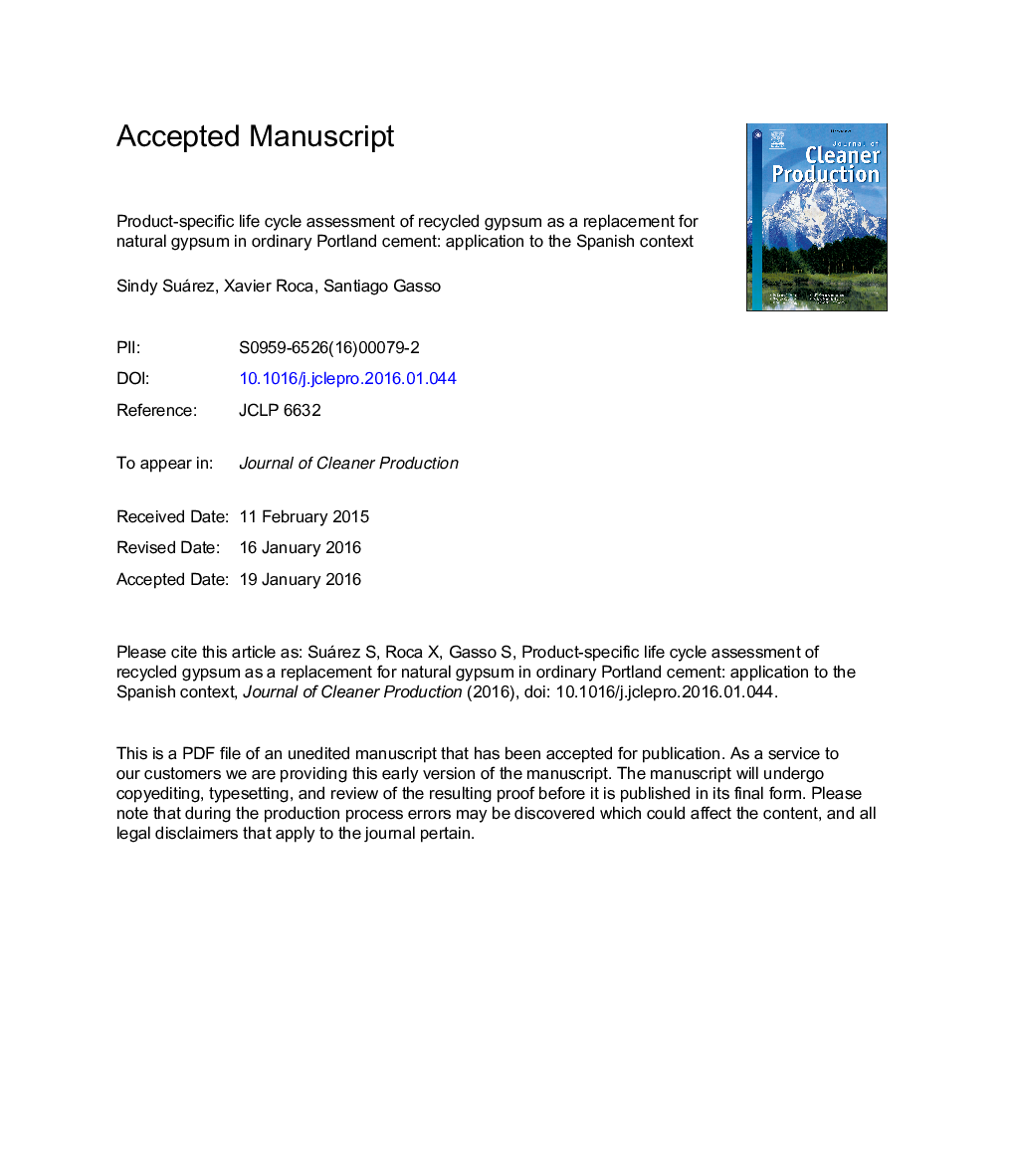| Article ID | Journal | Published Year | Pages | File Type |
|---|---|---|---|---|
| 8102589 | Journal of Cleaner Production | 2016 | 33 Pages |
Abstract
The results of this study confirm that RG had environmental benefits in all the environmental categories evaluated when the GW was transported to a recycling plant at a distance equal to or less than 30Â km. The study shows that the process of recycling gypsum consumes less than 65% of the energy needed to obtain natural gypsum (NG), and emits less than 65% of the greenhouse gases produced in the process of obtaining NG. Greater savings of 35% were observed in the categories of carcinogenic effects, ozone depletion and land occupation, even when gypsum waste was transported to a recycling plant at a distance of 50Â km. In addition, we found that the environmental impact on the evaluated categories was slightly lower when RG was used instead of NG in the production of OPC. It was assumed that the distance from the site of production of gypsum to the cement plant was the same.
Related Topics
Physical Sciences and Engineering
Energy
Renewable Energy, Sustainability and the Environment
Authors
Sindy Suárez, Xavier Roca, Santiago Gasso,
